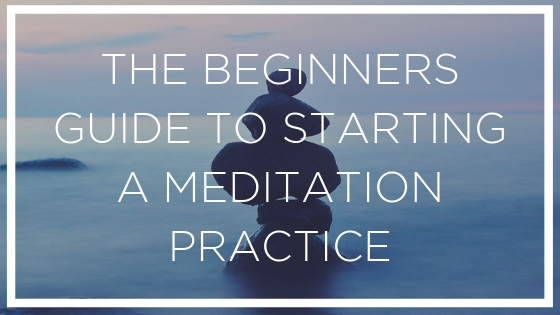You’ve heard about the benefits of meditation. Maybe you have attended a meditation class. Internally you tell yourself you want to start meditating more frequently. But for whatever reason, you just can’t seem to develop a regular practice.
I began meditating 10 years ago. In that time, my practice has fluctuated wildly in frequency and included many different styles with varying levels of intensity. If someone went to the gym with such inconsistency and aimlessness, they would be lucky to see results at all.
Yet here I was expecting to see results from my meditation practice.
Here follows what I wish I knew ten years ago.
YOUR INTENTION
It all begins with Why? If you are planning to have a regular practice of meditation you will need a compelling reason to make the sacrifices and effort required.
- Do you seek the end of self-sabotage, dissatisfaction, and suffering?
- Are you curious about how your mind operates and how to change its conditioning?
- Do you seek to maximise your potential?
Meditation has a myriad of health benefits from improved sleep, reduced anxiety, increased concentration, decrease inflammation. To greater insights about ourselves, who we are, and what we want out of life. It can lead to altered states of consciousness including bliss, peace, contentment, and oneness. All the way to its ultimate goal of awakening/enlightenment, to see the true nature of reality free from illusion.
For myself, I value the clarity of mind meditation provides. In this over-stimulated world, meditation gives me the space to remember who I am and where I want to go. It allows me to see my place in this world and find peace and contentment in each moment.
Remember the intention is the root of learning any new skill. What is your intention for starting a meditation practice? Write it down.
WHAT IS CONSCIOUSNESS
The goal of meditation is to expand and grow your consciousness. But what even is consciousness?
Consciousness includes the sensation of falling in love, the taste of breakfast this morning, the voice you hear when you read these words. It is everything you’ve ever felt, thought, or experienced.
Consciousness can be separated into two distinct areas. Attention & Awareness.
Attention is the focus of our mind at the time. Similar to how your sight allows you to focus on an object and see it in great clarity and detail. The mind is able to focus itself on any sensation, isolate it and analyse it.
Awareness, on the other hand, is what is going on in our peripheral. It’s the subtle sounds you can hear right now in the background. The sensations in your hands and feet. Awareness provides the context to what we know in our attention.
These two together make up your consciousness, every moment of the day. They play a tug of war of the limited amount of consciousness we have. If our attention increases, its at the expense of our awareness. Alternatively, when our awareness of the peripheral expands, our attention shrinks.
I’m sure you can remember a time, perhaps in a heated argument, or when falling in love. Your attention becomes so focused, so narrow, that reality outside of that situation falls away. In this state is when people make decisions that they may later look back on and wonder ‘What was I thinking?!’ Awareness and context had left the building.
Meditation allows us to grow our total pool of consciousness, by working to strengthen attention while simultaneously increase our awareness. Doing regular repetitions of this will leave you with one chiseled brain.
THE SET-UP
Meditation has to be the easiest practice to get started with. It doesn’t matter who you are, where you are, you can get started right away. However, it is nice to set yourself up with both a comfortable seat and a timer.
When seated for meditation, the idea is to keep the spine straight and erect. Ideally without support. To begin with, a chair or bench is fine, but as your practice grows you will want to progress to a cushion.
A meditation cushion, or ‘zafu’, is ideal. Even a pillow or lounge cushion will do. By propping up the hips, this allows the pelvis to tilt forward, bringing the pelvis and spine into alignment and maintaining a natural curve in your lower back.
A timer is easy to get, any smartphone with a timer function will do. Plenty of meditation apps exist as well. The key here is to remember to put your phone on airplane mode.
OBJECT OF MEDITATION
The oldest text on meditation details 112 different focuses of attention. To save you from the paradox of choice, I will recommend you start with your breath. Why the breath you ask?
The breath is always available to us and continues without any effort. It reflects life in that it is rhythmic and predictable yet always different. On top of all that, it unites us with all sentient creatures on earth. We all breathe the same air.
The breath will act as your anchor during the practice. As the turbulent waves of thoughts and emotions threaten to cast you adrift. Just come back to your breath when you realise you have drifted.
BEGINNING YOUR PRACTICE
The time has come. Get comfortable on your seat/cushion. Set your timer for 20 minutes. Close your eyes. Consciously relax your body and your mind. Inhaling and exhaling through the nose.
Turn your attention towards your body, registering any sensations you feel within the body. Prioritising these sensations over any thoughts coming to you. We then begin to constrain your attention down to the sensations purely related to the breath. Paying careful attention whilst maintaining peripheral awareness.
Finally, we limit our attention to the area around the nostrils. Remembering that the focus is the sensations of the breath, not the breath itself. Here we are not trying to think about the breath, verbalise it in our mind, or conceptualise it. Merely paying to the sensation associated with the breath. Then relaxing our peripheral awareness to take in all sensations without attaching to them.
Now that our focus is on the limited sensations around the nostrils and our awareness is relaxed. It is unlikely if you are a beginner that your attention will hold for even 30 seconds without being taken by a distracting thought. Before you know it you’re thinking about the embarrassing thing you said at a dinner party last month. When dealing with distractions we remember the mantra ‘Let it come, let it be, let it go’
CONTINUING THE PRACTICE
Sometimes our mind doesn’t wander but grows dull instead. There have been numerous times I have gone to sit down for practice, only to wake myself up with my own snoring and drool down my face. A side effect of a lifetime of associating turning attention inwards, with going to sleep. This outcome is more likely when in a reclined position in a chair or bench supported. If you find yourself becoming tired, you can begin taking forcibly deep breaths or tense the muscles in your body.
By now the timer should have gone off and thus concluded your meditation session. Each time you practice, the experience is likely to be different. Sometimes you may have great feelings of contentment or ecstasy. Others may be difficult or even painful. The important thing is to not become attached to good sessions or fear tough ones. But to focus on the consistency of showing up regularly.
OBSTACLES TO YOUR PRACTICE
You’ve now begun your own meditation practice, and are beginning to reap the benefits. Life has other plans though. There are regular obstacles each meditator faces when first beginning to prevent the seed of meditation from taking root in your day to day life. These are:
- Reluctance
- Self-Doubt
- Time
- Procrastination
Reluctance can be felt whenever we take up any new habit that doesn’t provide the usual dopamine rush we have become used to in modern life. Much easier to watch Netflix or scroll Instagram then do the hard work of training the mind. This is when we refer back to the initial intention that was set. Practicing with diligence for one month will give you results that will then perpetuate the want to practice.
Self-Doubt creeps into all minds at some point. The little voice that says ‘you aren’t doing it right’, ‘you’re wasting your time’ etc. This can steal away our enthusiasm for practicing. Remembering to remain vigilant for these thoughts, and notice them for what they are, just thoughts.
Time is what we all seem to lack in this modern day. Finding time for a practice comes down to making it a priority. By making it a priority for 30 days, you are more likely to commit it to it. Schedule it into your diary like you would a gym session or dentist appointment.
Procrastination is my personal biggest weakness. I am reminded of the Spanish proverb ‘Tomorrow is the busiest day of the year’. The way I found to combat my habit of putting it off, is to do it first thing in the morning. Before the problems of the day pile up, going to bed just that little bit earlier. Bonus: regular meditators have been shown to require less sleep time.
GOING FORWARD
This is just the tip of the iceberg with meditation. To this day I am still uncovering new truths and shocked by the depth of such a deceptively simple practice.
Let me know how you go with it, or what obstacles you face and how you overcome them. If you are an experienced meditator I would love to know what tips you would give a newcomer.
Recommended Reading
Mindfulness in Plain English – Ven. Henepola Gunaratana
The Mind Illuminated – John Yates, Jeremy Graves, Matthew Immergut
Zen Mind, Beginners Mind – Shunryu Suzuki

Hi, I am Matt. I am a passionate student of health and wellness. The science of yoga is the most effective system I’ve yet found for bringing about physical vitality with mental clarity. By blending a Western approach of anatomy and alignment, with Eastern philosophies and meditative techniques. My mission is to share these modern and ancient teachings to help others find harmony in their life.
